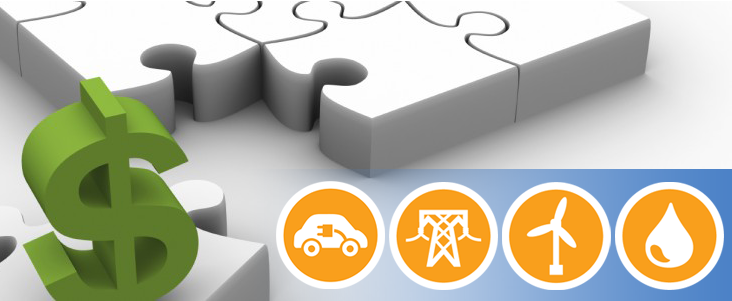
This week’s news was full of microgrids. From how technology developed for cryptocurrency is ushering in a shared energy economy to microgrids for marijuana grow operations, we’ve got a news roundup that sounds worthy of the darkest corners of the internet. It’s all above board, though, and part of a growing advanced energy industry!
Two years ago we asked whether or not energy had a place in the sharing economy. Could there be an Uber or AirBnB for energy? Sure, the potential was there, but it would take some changes in how we generate and transmit electricity. Back then I wrote, “A shared electricity future is still that: the future. But it’s not necessarily so futuristic. I bet we’ll be ubering up kilowatt-hours before long – and before we get into a flying car.”
This week, though, Siemens and LO3 Energy announced that they were working to bring the shared energy economy to life. The companies are using blockchain technology to allow for peer-to-peer sharing of energy resources in Brooklyn, allowing neighbors to purchase power from each other’s rooftop solar panels.
Before we get into that, here’s a quick primer on blockchain technology. The original idea was conceived in 2008 as part of the founding document behind bitcoin, the digital currency and payment system. Though you would never hold bitcoins in your hand, they can be exchanged for goods and services without being bound by exchange rates or even limited to strictly being “money.” This is thanks in large part to blockchain technology, which creates a built-in underlying transaction ledger. The blockchain on any particular bitcoin (or any other cryptocurrency) is a bit like trading shares of stock through a broker who updates a ledger, except there’s no broker and the ledger is tied to the share forever.
Imagine if WheresGeorge.com, a website devoted to tracking dollar bills, were compulsory, and each transaction was recorded on the dollar bill itself. That doesn’t work in the world of physical dollars and cents—we can’t exactly make a rubber stamp for every business in the world. Yet, in the digital realm, things are different. Each bitcoin has a complete record of its transactional lineage embedded like a DNA marker.
One of the benefits of blockchain technology is that it is very difficult to hack or fake, which means you can program a bitcoin to complete only certain transactions or even assign it to mean something other than “money.” As explained in this video, a bitcoin owner can assign a bitcoin unit to mean different things: “a euro cent, a share in a company, a kilowatt hour of energy, or a digital certificate of ownership.” Guess which of these we’re interested in.
Siemens, an AEE member, says that it sees “tremendous potential” in the marriage of blockchain technology and microgrid applications.
“It permits transparent, efficient trading between multiple participating systems and various stakeholders while taking grid-specific requirements into account,” said Thomas Zimmerman, CEO of Siemens’s Digital Grid business unit, in a statement.
Siemens will be providing microgrid control and automation systems, which will be used in concert with the blockchain technology LO3 Energy has in place. The technology, highlighted earlier this year in Vice Motherboard, has been in operation since March.
“We'll be providing our microgrid management software, which links to LO3's blockchain platform, allowing the two systems to communicate with one another," Annie Satow, a spokesperson with Siemens, explained in an interview with Greentech Media. “Linking the two enables real-time analysis of the microgrid's operation, along with trading between consumers and producers. It's a first-of-its-kind project and something we'll hope to bring to other parts of the world based on what we learn in Brooklyn.”
Although this peer-to-peer sharing circumnavigates the traditional utility business model, utilities themselves are using similar principles to create systems of distributed energy generation and turn them into virtual power plants and Integrated Distributed Energy Resource Portfolios. You can read more about that in a guest post from AEE affiliate member Navigant Research here.
Meanwhile, many utilities are facing other energy system challenges—namely a pot problem. Legal marijuana grow operations, either for medicinal or recreational use, are using up a lot of electricity. Current estimates place it at about 1% of U.S. electricity demand and growing. This week The New York Times profiled a company that is working to lower their bills by using LED lights to grow marijuana, and The Energy Gang podcast discussed the possibility of renewable microgrids to power grow operations.
In my 2014 piece on the shared energy economy, I identified two major barriers to “uberizing” energy. The first was supply (not enough people owned an energy system that could generate a supply that made sense to share) and the second was the lack of a system that allowed for sharing. Thanks to a greater penetration of distributed energy resources and more and better microgrid management systems (as well as the development blockchain technology), those barriers are much less daunting today. So, what’s next? We don’t know, but keep your eyes on this space. We will keep you up to date and in the know on any developments!
Subscribe to AEE Weekly for free by clicking the button below.
